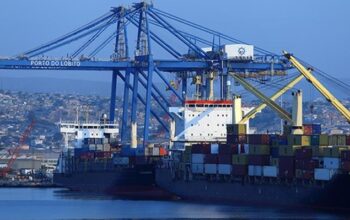Namibia’s informal cross-border trade sector has experienced a significant decline since 2019, with activity dropping by 46.8%, according to the latest report from the Namibia Statistics Agency (NSA). Informal trade fell from N$19.4 million in September 2019 to N$10.3 million by November 2023.
Despite this decline, several key border posts, particularly Oshikango, continue to play a vital role in the country’s trade network.
Oshikango remains the leading border post for informal trade, recording N$4.4 million in exports, representing 33.6% of total exports.
It also contributed N$397,000 in imports, accounting for 33.6% of Namibia’s informal imports. The post maintained a trade surplus of N$4 million, highlighting its strategic importance in cross-border trade with Angola.
Katima Mulilo ranked second, with exports totaling N$2.8 million, or 31% of the total. Its imports amounted to N$66,000, representing 5.6% of informal imports.
Katima Mulilo achieved a total trade volume of N$2.9 million, with a surplus of N$2.8 million.
Omahenene contributed 16.1% of Namibia’s total informal exports (N$1.5 million) and 31.2% of total imports (N$368,000), resulting in a trade volume of N$1.8 million and a surplus of N$1.1 million.
Sarasungu reported the lowest export share, with only 4.5% (N$407,000) of exports, while handling 29.6% (N$349,000) of Namibia’s imports.
This resulted in a total trade of N$756,000 and a modest surplus of N$58,000. Despite its smaller scale, Sarasungu remains a key player in informal trade.
The report noted that exports dominated informal cross-border trade, accounting for 88.5% (N$9.1 million) of the total, while imports made up just 11.5% (N$1.2 million).
Namibia achieved a trade surplus of N$7.9 million during the review period, with no recorded trade deficits since the inception of the NSA’s Informal Cross-Border Trade Survey.
The survey involved 25,765 traders, with the majority being exporters. Of these, 82.7% (21,302 traders) were involved in exports, while only 17.3% (4,463 traders) focused on imports.
Male traders dominated exports, contributing N$6 million, while female traders controlled 71.5% of imports, showcasing gender dynamics within the sector.
Angola emerged as Namibia’s largest informal trade partner, accounting for 69% of exports and 94.4% of imports. Zambia contributed the remaining 31% of exports and 5.6% of imports.
Key export commodities during this period included sugar, cereal flours, and baked goods, while leading imports consisted of cereal grains, vegetables, and pasta, reflecting the diversity of goods traded between Namibia and its neighboring countries.
Despite the decline in overall trade volume, Namibia’s informal cross-border trade sector remains critical, with positive trade surpluses and significant activity at border posts such as Oshikango and Katima Mulilo, underscoring its resilience and continued importance to the national economy.




